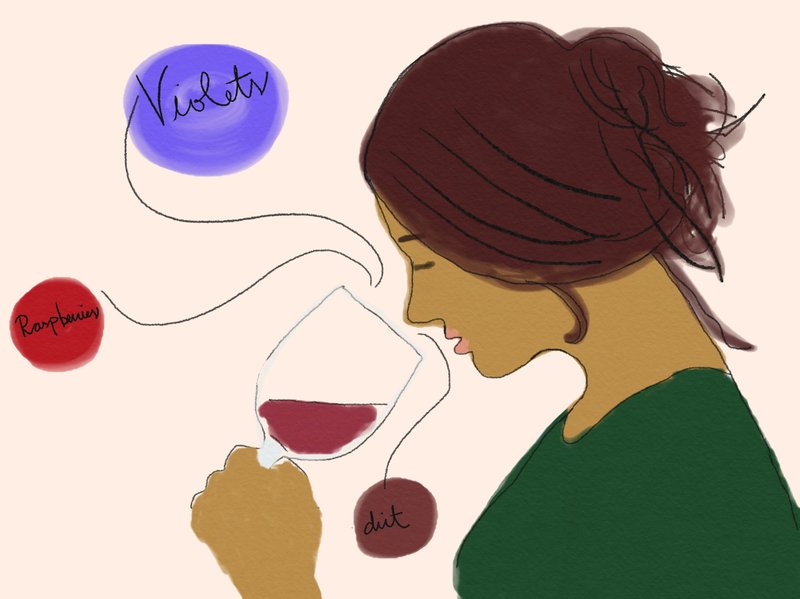Longtime Uncorked readers may recall my early columns always included "wine notes" with my recommendations. Recently, one of my readers and a dear friend asked, do those tasting notes help in recommending wines and if wine is made only from grapes and yeast, why there are so many other flavors and smells used to describe wine?
Of course, we know the winemaker isn't adding freshly cut grass or citrus zest to the wine barrel, so how do these aromas end up in your wine glass? The aromas and flavors in wine come from both the grapes and the fermentation process. Each grape variety has a unique profile determined by its physiological makeup as well as aromatic compounds influenced by where the grape was grown. Some varietals exhibit different aromas depending on the climate of where they were grown. Farming methods can also influence the flavor profile of a grape. Fermentation adds yet more layers of aromas and flavors from yeast, winemaking techniques and even cellar environment. There are hundreds of aromatic compounds called esters that are released during the fermentation process. Some of these esters contain the same molecules found in familiar aromas of roses, honey, vanilla, cherries, etc.
But it really comes down to tasting and smelling these in a wine and then putting it into words. Because most grape varietals have a distinct profile, professional tasters are able to pull out these descriptions to give a generally accurate consensus of what a particular wine tastes and smells like. It's up to the taster to come up with a vocabulary — those long poetic tasting notes — to communicate the individual wine's specific characteristics.
I like to call these "smell memories" in the general approach I use with my students in teaching tasting techniques. If you smell a wine and it immediately reminds you of cleaning supplies such as Pine-Sol then you can go further to identify it as the smell of pine. Many of my students describe the gamay grape in Beaujolais wines as "strawberry bubble gum." This is exactly correct because these wines will have an overwhelming smell of fresh strawberry.
The more you taste and smell wines the easier it gets to understand (and write your own) tasting notes. The best way of becoming more versed is practice. The next time you sit down with a glass of wine, take the time to really smell and taste the wine and put those aromas and flavors into words.
THE VALUE
2018 Cupcake Marlborough Sauvignon Blanc, New Zealand (about $11 retail)
THE SPLURGE
2018 Hugel Alsace Riesling, France (about $26 retail)
Lorri Hambuchen is a member of London's Institute of Wines and Spirits. Contact her at the Arkansas Democrat-Gazette, P.O. Box 2221, Little Rock, AR 72203, or email:
Food on 11/13/2019

